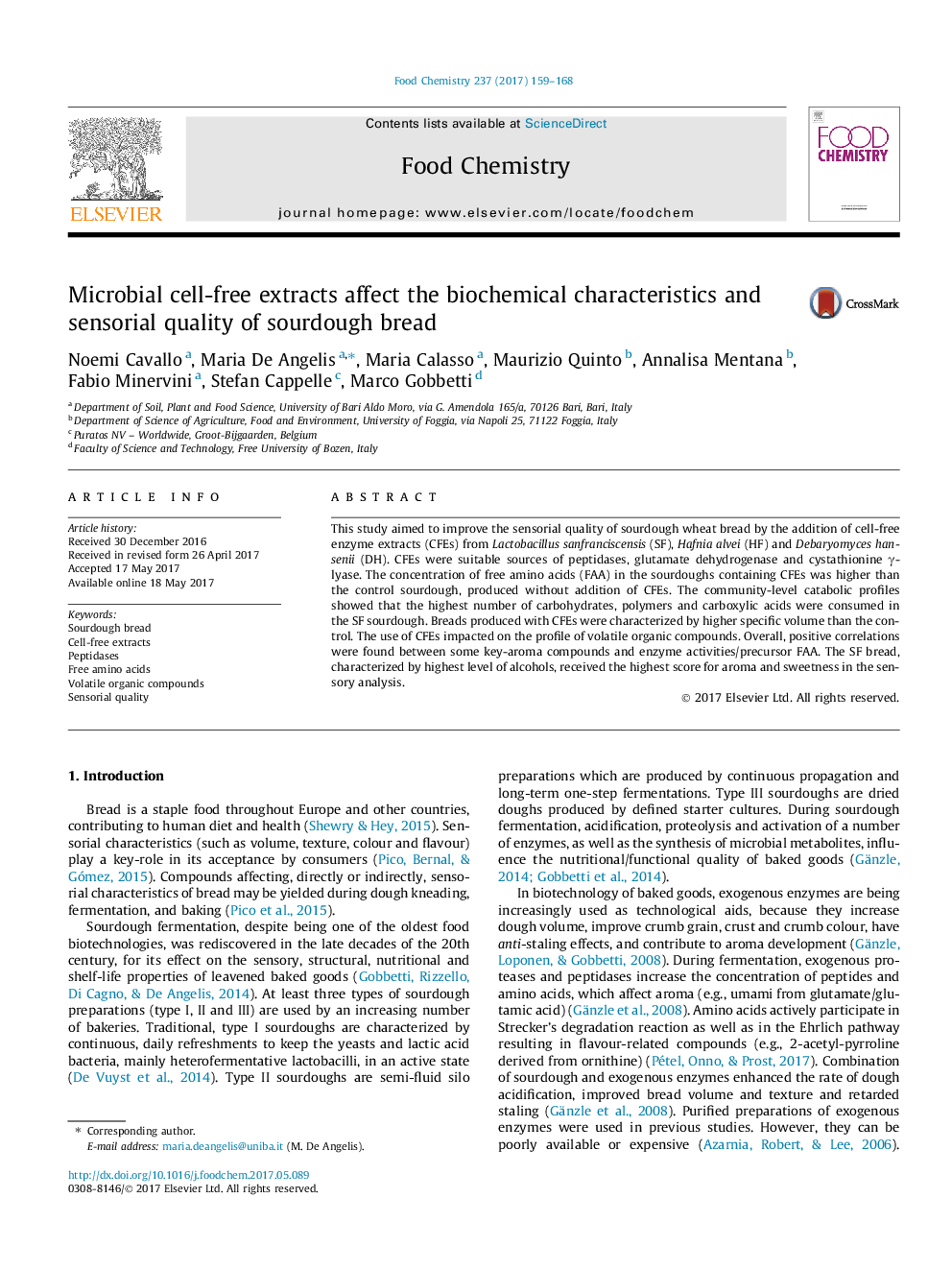| Article ID | Journal | Published Year | Pages | File Type |
|---|---|---|---|---|
| 5132712 | Food Chemistry | 2017 | 10 Pages |
â¢Cell-free extracts drove an increase of the free amino acids in the sourdoughs.â¢Cell-free extracts increased the metabolic activities of the sourdough microbiota.â¢Bread aroma compounds were positively correlated with enzyme activities.â¢Bread aroma compounds were positively correlated with precursor free amino acids.â¢Higher specific volume was found for breads produced with cell-free extracts.
This study aimed to improve the sensorial quality of sourdough wheat bread by the addition of cell-free enzyme extracts (CFEs) from Lactobacillus sanfranciscensis (SF), Hafnia alvei (HF) and Debaryomyces hansenii (DH). CFEs were suitable sources of peptidases, glutamate dehydrogenase and cystathionine γ-lyase. The concentration of free amino acids (FAA) in the sourdoughs containing CFEs was higher than the control sourdough, produced without addition of CFEs. The community-level catabolic profiles showed that the highest number of carbohydrates, polymers and carboxylic acids were consumed in the SF sourdough. Breads produced with CFEs were characterized by higher specific volume than the control. The use of CFEs impacted on the profile of volatile organic compounds. Overall, positive correlations were found between some key-aroma compounds and enzyme activities/precursor FAA. The SF bread, characterized by highest level of alcohols, received the highest score for aroma and sweetness in the sensory analysis.
